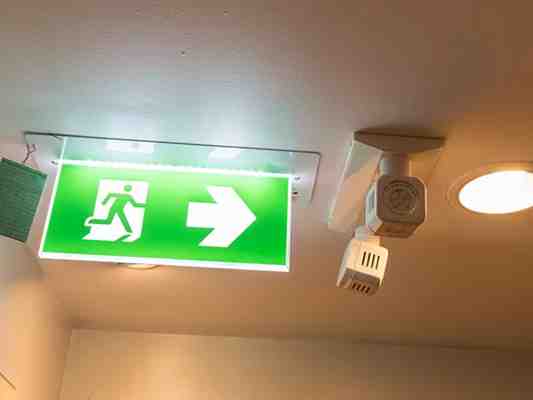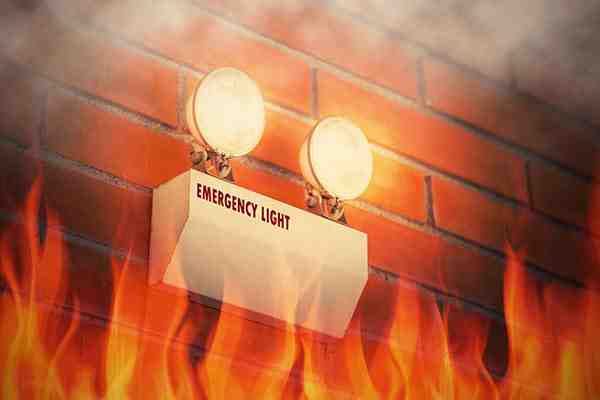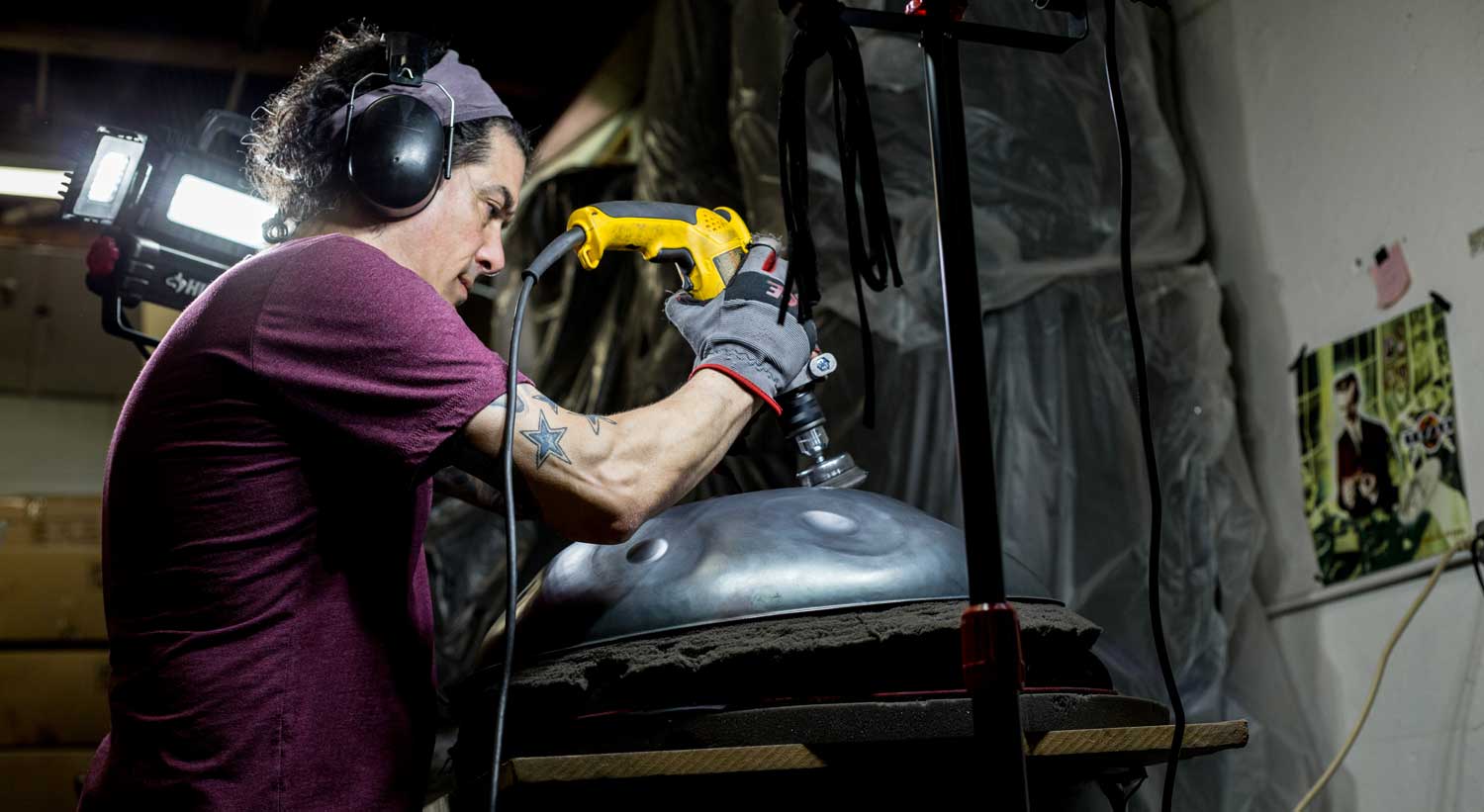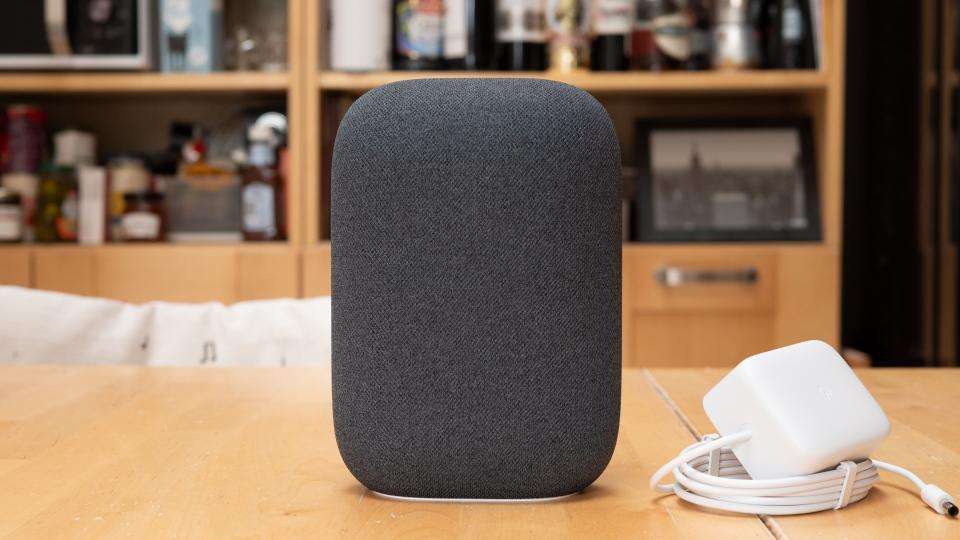Types Of Emergency Lighting
Emergency lights are a necessity in any public or commercial establishment. By ensuring you have a lighting system installed (and regularly maintained) in your building, you are investing in safety and compliance. Make sure your employees (and any visitors to your establishment) have a clear escape path in an emergency.

Emergency luminaries are integral in the event of a mains power failure. When a power outage occurs, the lights will provide a safely lit path to an exit. Familiarise the occupants of your building with the emergency lighting layout and any evacuation plans you have in place. This will minimise risk if an emergency does occur.
When it comes to choosing an emergency luminary system, there are two types of lighting designs you may consider. These systems are called non-maintained and maintained emergency lighting. The design you choose is entirely your choice, however it familiarising yourself with the available lighting models will help you make an informed decision.
What is maintained emergency lighting?
Maintained emergency lighting is a term used to describe an emergency luminaire system that is in continuous use. This means that the lighting remains illuminated 24/7 and each light has a dual use – one as a regular lamp, and another as an emergency light. Maintained systems can usually be found in the following buildings:
Theatres
Cinemas
Clubs
Entertainment venues
Shopping centres
Maintained systems are generally recommended in buildings where the occupants are unfamiliar with the evacuation route. The use of a regular light fitting is less disruptive and confusing for occupants who are unfamiliar with the building layout.
What is non-maintained emergency lighting?
Non-maintained emergency lighting is lighting that only activates during an emergency or mains power failure. At all other times, the lights remain switched off. Non-maintained luminaires can be found in the following environments:
Commercial buildings
Offices
Factories
Non-maintained systems are generally found in buildings where the occupants are familiar with the evacuation plans. The illumination of the backup system will be less concerning to those who are aware of its existence.
Neither system is superior – your choice in lighting should be informed by the nature of your building and its occupants. If you’re unsure which system should be installed in your building, enquire at similar business locations or contact your local council for a recommendation. The AS 2293.1:2005 standard for emergency escape lighting and exit signs for buildings (system design, installation, and operation) should serve as a guide when installing a new system. The compliance requirements for your unique building will be outlined in this standard.
If you have any questions about maintenance requirements, contact our proficient testing and inspection team.
Emergency Lights Maintenance
Regular maintenance is essential – no matter the nature of your lighting system. At Jim’s Test & Tag, we offer testing and inspection services to businesses throughout the nation. By ensuring your lighting systems are subject to regular maintenance, you are investing in the safety of your building and the longevity of your emergency system.
Emergency luminaries must be tested every 6 months. This is dictated by the current Australian standard for emergency evacuation lighting for buildings, the AS 2293.2:2005. During this inspection, a technician will conduct a 90-minute discharge test (a power outage simulation) and identify any system faults. The technician will inspect each individual globe and make replacements where required. A 12-monthly inspection is also required with all the same requirements as the 6-monthly test, plus a few additions. The electrical testing professional must inspect and clean the fittings and reflective surfaces. This will help reduce the need for replacement globes and ensure optimum illumination from the current lighting system. LED replacement globes are recommended as a replacement option for increased energy efficiency and lifespan.
Contact our team here at Jim’s Test & Tag for a free quote and arrange an inspection today. We can help you maintain the lighting in your building, no matter the nature of your system. Our technicians are familiar with all types of emergency lighting systems and are more than happy to service your building. With Jim’s Test & Tag, you can be sure that your building is in safe hands.
Types of Emergency Lighting
Emergency lighting is an important feature for every building and business. When a power outage or catastrophic event happens, emergency lights show the way for a safe exit. Emergency lights are permanently mounted, battery operated lights, which are tied into the building’s power grid. They draw power from the grid to maintain a fully charged battery. In the event of a power loss, the light automatically turns on, providing enough light for people to leave the facility. There are different types of emergency lighting that vary in their power and lighting sources.

MAINTAINED
Maintained emergency lights are on all the time. They are usually found where large groups of people are gathered. The lighting is designed to continue to work even when there is a power outage, preventing total darkness. It can be used as standard lighting as well but switches to battery power when the electricity goes off. It is commonly found in auditoriums, movie theaters, hospitals, airplanes and shopping malls.
NON-MAINTAINED
Non-maintained lighting only comes on in the event of a power failure as an emergency light source. It is usually battery-operated and regularly charges itself through its own power supply to guarantee that it will activate when the power goes out.
CENTRAL BATTERY
The battery power for the emergency lighting is located at a central point and feeds to all the emergency lights in the event of a power failure, whether they are maintained or non-maintained. A LED indicator shows that the battery is being charged while there is power. When the power fails, the LED will switch off and the light will be illuminated by the battery.
SUSTAINED
The emergency light is separate from the central point for its power source. This minimizes any possibility of emergency light failure because it is only used in emergencies for maintained lights.
Both maintained and non-maintained emergency lighting require regular testing to ensure the safety of the occupants in the event of an emergency. The lights are required to stay on for a least an hour.
The type of emergency lighting system needed is determined by the type and layout of the building, the type of business, and the kind of occupancy. Call Fire Control Systems to install or test your emergency lighting today.
A complete guide to emergency lighting
In the event of an emergency, emergency lighting is the first line of escape. This is part of an active fire prevention system and is installed throughout all building types as part of the safety provisions of a building.
The emergency lighting system is an integral part of the overall design of a building to reduce anxiety and stress should a power failure take place. In the event of a fire when the electrical power supply may be compromised, the evacuation of occupants is challenging. The provision of emergency lighting provides comfort and visual capabilities for safe and effective evacuation through escape routes.
It helps to identify fire alarm panels, call points, firefighting, safety equipment, exit points and hazards such as stairs, changes of direction, intersections, slopes. If the immediate area outside the final exit has hazards in darkness, risk assessment should determine if further emergency lighting is needed until safety can be reached.
Emergency escape lighting is not designed to allow normal operations to be continued in the building in the event of failure of the normal lighting. Standby lighting is used for areas where normal activities are required to continue substantially unchanged in the event the supply to the normal lighting fails.
Emergency lighting systems must be installed by a competent person accredited by a professional body.
There are three modes of operation of emergency lighting;


![31 Best IPTV Services for FireStick, Android TV, PC [Dec 2021]](https://www.lampsofbible.com/storage/upload/Images/_1639646173_nXrO23JGnM.jpg)





